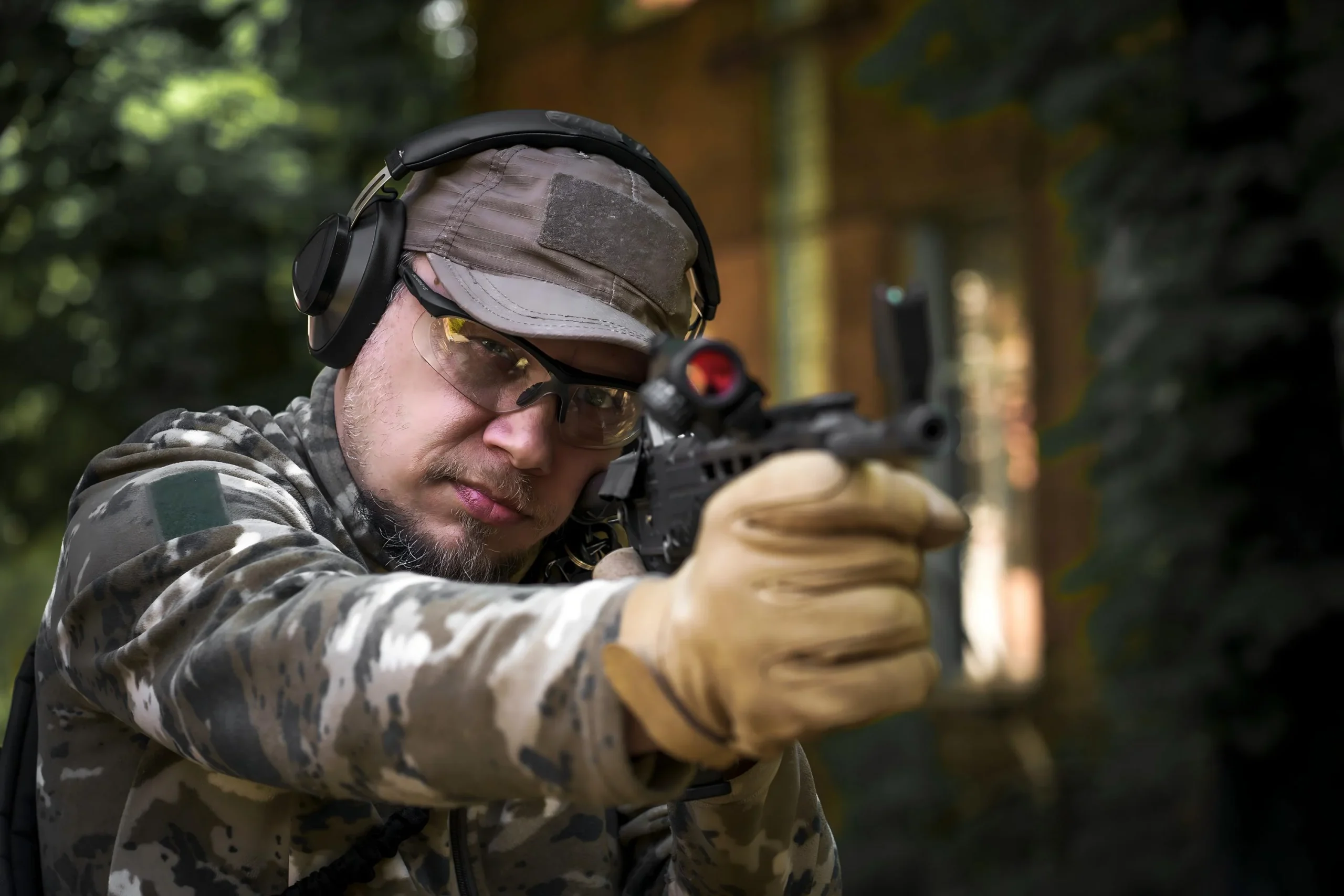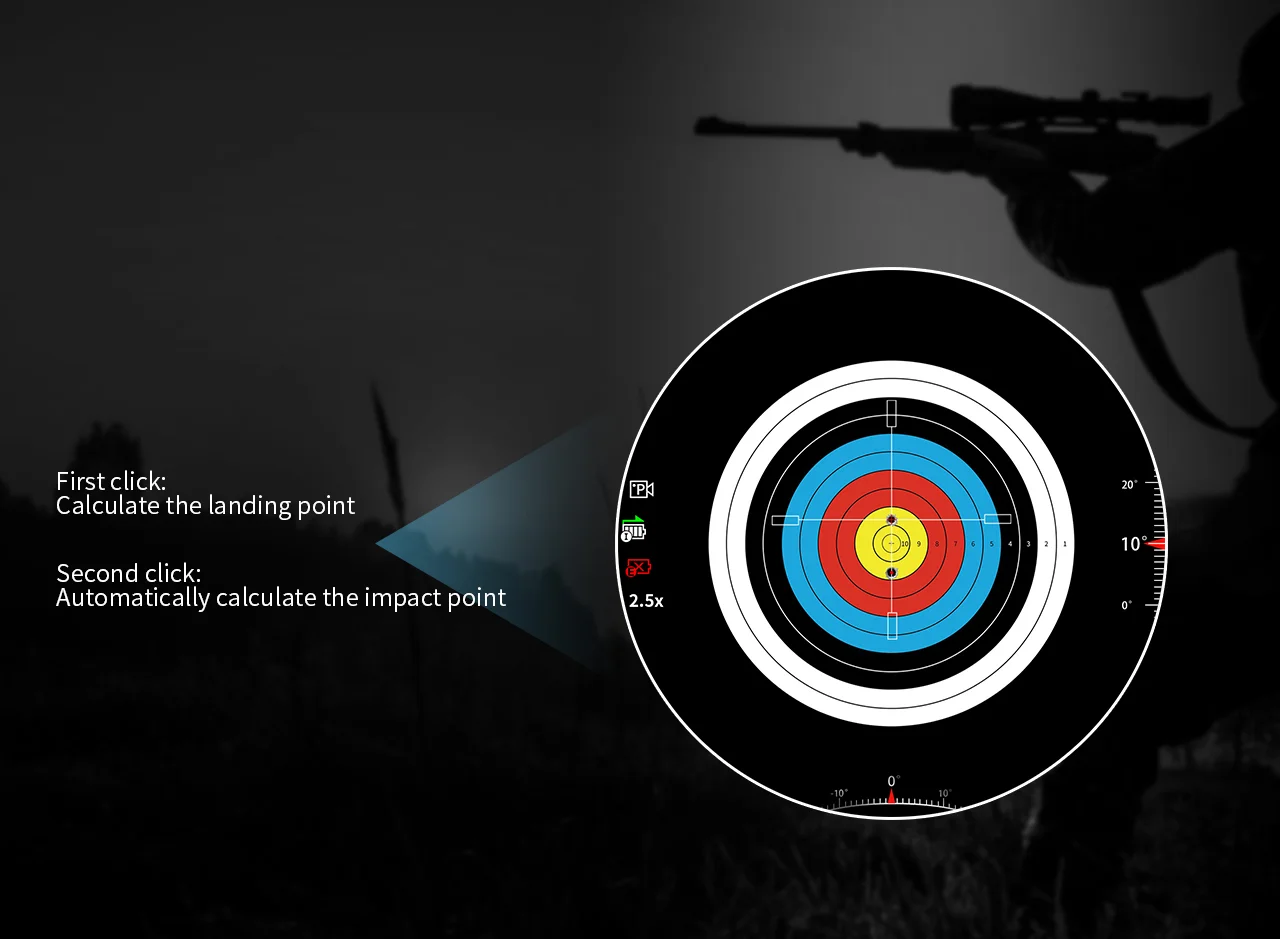How to Select Riflescope Magnification Based on Your Shooting Needs

Picking the right zoom for your Riflescope depends on what you’re doing, how far your target is, and what you’re aiming at. For close shots (under 100 yards), a 1-4x or 2-7x scope is a great choice. They show a big area, so you can spot stuff fast. For middle ranges (100–300 yards), try a 3-9x or 4-12x scope. These mix zoom with a clear view. For far-off shots (over 300 yards), go with a 4-16x or higher. Hunters like low-power variable scopes, like a 2.5-10x, because they’re easy to adjust. Tactical shooters might grab 1-6x or 1-8x LPVOs for quick aiming. If you’re into precision shooting, you need really clear glass and tough turrets. A 6-24x scope is common for that. Also, think about reticle types, lens coatings, how strong the scope is, and how you’ll mount it. These things matter a ton for good results. Cool options like YUBEEN thermal scopes let you see clearly in any light. Always pick clear pictures and ease of use over just the biggest zoom.
What Do Riflescope Magnification Numbers Mean?
When you see a Riflescope marked “4-16×50,” the numbers tell you two things. The “4-16x” means you can zoom from 4 times to 16 times bigger than real life. The “50” shows the objective lens is 50mm wide. This changes how much light comes in and how much you see. Fixed zoom scopes, like a 10x, are simple and sturdy but don’t adjust. Variable zoom scopes let you change the magnification based on what you’re doing.
Choosing between fixed and variable scopes depends on what you need. If you shoot at the same distance every time, like in matches or practice, a fixed scope is fine. It’s strong and easy to use. But if you hunt or deal with different ranges, a variable scope is better. It can adapt to whatever you’re up to.
How Do Field of View and Eye Relief Affect Your Choice?
Field of view (FOV) is how much you can see through the scope at a set distance. Less zoom gives a bigger FOV, so you can find targets fast, especially in thick woods or quick moments. Eye relief is how far your eye needs to be from the lens to see the whole picture. It’s key for comfort and safety, especially with rifles that kick hard.
Scopes with lower zoom usually have better eye relief and a wider FOV. These are awesome for quick shots or close-up tasks.
What Shooting Distance Are You Mostly Engaged In?
The distance you shoot at most is the biggest deal when picking magnification.
Which Scope Powers Are Best for Short-Range Shooting (Under 100 Yards)?
For close-up jobs, like pest control or hunting in dense forests, a 1-4x or 2-7x Riflescope is fantastic. They give you a wide view, so you can follow moving targets easily. The big FOV helps you find your target super quickly.
Is Medium Range (100–300 Yards) Your Sweet Spot?
Most hunters and casual shooters stick to this range. A 3-9x or 4-12x scope is perfect here. They give enough zoom without fuzzy images. In places like the Midwest, with tons of trees, you don’t need a crazy high zoom. A lower-power scope also works great in dim light and shows a bigger area.
Do You Regularly Shoot Beyond 300 Yards?
For long shots, like hunting big animals in open fields or precision target practice, pick a 4-16x or 6-24x Riflescope. These give you the zoom you need. But don’t think more zoom is always better. Clear glass and solid turrets are just as important for hitting faraway targets.
Does Your Target Type Influence Your Scope Power?

You bet it does. What you’re shooting at changes what zoom works best.
What Magnifications Suit Hunting Applications Best?
For most hunting, especially in wooded spots, a low-power variable optic (LPVO) like a 2.5-10x is handy. It keeps your view wide and lets in lots of light. Common picks are 3-9x, 4-12x, or 2.5-10x scopes. These let you adjust for different situations while keeping things sharp.
Are Tactical/Defense Use Cases Better Served by Specific Ranges?
Tactical setups need quick aiming and flexible ranges. A Riflescope starting at true 1x and going up to 6x or 8x is great for AR-style rifles in cities or tight spots. These LPVOs let you switch between close and medium ranges in a snap.
What Do Benchrest and Precision Shooters Need Most?
Precision shooting isn’t just about big zoom. You need super clear glass and reliable turrets. Some shooters use scopes up to 27x, but many stick to 18x or less in competitions. Too much zoom can cause problems like mirage distortion, which makes your view blurry.
What Scope Magnifications Work Best With Different Firearms?
Matching your Riflescope’s zoom range to your firearm type gives the best results.
Are Rimfire Rifles Better With Lower-Power Scopes?
Yup, they are. Rimfire rifles, used for plinking or small game, work great with low-power scopes like a fixed 4x or variable up to 7x. These are light and perfect for short ranges.
What About Centerfire Rifles Used for Big Game Hunting?
Centerfire rifles need mid-range scopes, like a sturdy 3-9×40. If you hunt in different spots, a 4-16x with adjustable turrets might be better. These handle all kinds of distances and conditions well.
Can AR Platforms Be Optimized With Versatile Optics?
Absolutely. For AR-style rifles used at mid-ranges (100–500 yards), LPVOs from true 1x to 8x are fantastic. If you’re in a designated marksman role, you might want higher zoom for more accuracy.
Which Thermal Imaging Scopes Can Meet Diverse Needs Seamlessly?
For awesome optics with advanced features, check out the YUBEEN Thermal Imaging Rifle Scope. These are built for professional surveillance and tactical use, offering clear visuals in any light. The YUBEEN ET35L thermal system combines sharp heat detection with clever ballistic calculations in a tough, field-ready design. Even beginners can use it without trouble. Its ballistic mode doesn’t need complex inputs like BC values or muzzle velocity. The system makes aiming easy for new shooters while staying precise for experts.
What Features Beyond Magnification Should You Pay Attention To?
Zoom isn’t the only thing that matters. Other features change how well your Riflescope performs.
How Do Reticle Types Impact Accuracy?
Reticles come in all sorts of styles. Simple duplex reticles are great for hunting. Complex mil-dot grids are better for long-range calculations. Pick one that matches your goal: fast aiming or exact adjustments.
Why Should You Understand MOA vs MRAD Turret Adjustments?
MOA (Minute of Angle) is common with American shooters. MRAD (Milliradian) is popular worldwide and with tactical pros. Choose what you’re okay with calculating. Both work well if you use them correctly.
How Important Are Lens Coatings for Low-Light Performance?
Fully multi-coated lenses cut glare and let in more light. This is super important for hunting at dawn or dusk when it’s dark. Good coatings help you see clearly when light is low.
Should Durability Be Non-Negotiable?
Yes, for sure. Look for IP67-rated scopes. These are waterproof, fog-proof, and shockproof, even in crazy weather from -30°C to +55°C. A tough Riflescope can handle rough situations without failing.
How Can You Match Scope Selection With Your Style?
Figure out how often you shoot and in what conditions before buying a Riflescope.
Does Frequency of Use Justify Premium Features?
If you only shoot once in a while, basic scopes might be enough. But if you’re out every week, especially in tough weather, fancy features like recoil-activated recording or multiple zero profiles are worth it. They make your scope more reliable and helpful.
Can You Balance the Budget Without Sacrificing Quality?
Don’t go for high zoom on a cheap scope. You’ll probably get fuzzy images and wobbly turrets. Instead, focus on clear optics within your budget. Sometimes, a bit less zoom means better quality for your money. Always get the best optical system you can afford.
Why Is Warranty Support Crucial When Choosing Optics?
Look past the specs. Good warranty support matters when something goes wrong. A two-year full warranty, with replacements for quality issues, shows a brand believes in its product. This gives you confidence in the field.
How Should You Properly Mount and Zero Your Riflescope?
Awesome gear is only half the job. Mounting and zeroing it right makes your shots accurate.
What Are Proper Mounting Techniques You Must Follow?
Use the maker’s torque specs when tightening rings and base screws. Tightening too much can hurt the scope’s body or insides. Be careful to keep it secure but not damaged.
Bore Sighting vs Live-Fire Zeroing: Which Is Better?
Start with bore sighting to save time. It gets you close. Then, use live-fire testing to confirm your zero at your usual shooting distance, like 100 yards. This makes sure your shots are on point.
How Can You Maintain Zero Across Distances Effectively?
Pick scopes with multiple zero profiles. These let you switch between different loads or distances without re-zeroing every time. Five zero profiles are perfect for staying flexible.
What Final Checks Should You Make Before Buying That Scope?
Before you spend your cash, check a few things.
Is It Fully Compatible With Your Rifle Platform?
Make sure the scope fits your rifle’s rail (Picatinny or Weaver). Check eye relief for the rifle’s recoil and think about weight balance after mounting. These details are more important than you might guess.
Have You Compared Specs Within Similar Product Lines?
Even in one brand, some scopes are lighter, while others have more features. Compare models to find what fits your needs, like the YUBEEN Thermal Imaging Rifle Scope for high-tech options.
Did You Read Real User Reviews?
Reviews from real users show how scopes work in the real world. They point out strengths and weaknesses, especially in tough conditions where lab tests don’t tell the whole story.
FAQ
Q1: What’s more important: higher magnification or better glass quality?
A: Clear glass beats high zoom. Unless you need super high magnification for special tasks, good optics mean better shots at any distance.
Q2: Can I use one Riflescope across different firearms?
A: Yes, but make sure it can handle the recoil of all your guns. Adjustable settings, like multiple zero profiles, help if you switch between calibers a lot.
Q3: Is thermal imaging useful only at night?
A: No, thermal scopes like the YUBEEN ET35L work in any light. They spot heat signatures, so they’re great in daylight, too, especially in tricky terrain or thick cover. They give clear images for targets up to 2,600 meters away.
